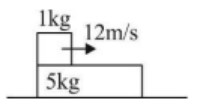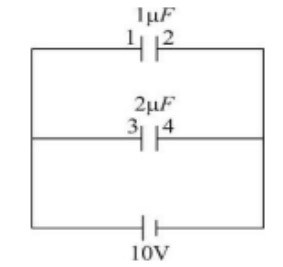Physics
Get insights from 5.6k questions on Physics, answered by students, alumni, and experts. You may also ask and answer any question you like about Physics
Follow Ask QuestionQuestions
Discussions
Active Users
Followers
New answer posted
2 months agoContributor-Level 10
(Q? - Q? )/Q? = (T? - T? )/T? ; Q = (300/600) * 1600 = 800 J
work done = Q? - Q? = 1600 – 800 = 800J
New answer posted
2 months agoContributor-Level 10
t? , half life = (log?2)/λ = 3 s
Initially 200 nuclei were there
After 3 half-lives, 9 seconds,
No. of nuclei = (1/2³) (200) = 25
Therefore, the number of nuclei that decayed = 200 – 25 = 175
New answer posted
2 months agoContributor-Level 10
EMF induced = BLV = 4 * 2 * 1 = 8V
Current produced = BLV/R = 8/1 = 8A
New answer posted
2 months agoContributor-Level 10
When relative sliding stops, both move with same velocity.
Only friction acts in horizontal direction.
∴ for system no external force, we can apply conservation of momentum.
1 * 12 + 5 * 0 = 6 * v
v = 2 m/s
Now work done by friction on block = change in kinetic energy of block
w = (1/2)m (2² - 12²) = (1/2) (1) (4 - 144) = (1/2) (-140) = -70 J
New answer posted
2 months agoContributor-Level 10
Charge initially on capacitor 1=10µC
Charge initially on capacitor 2=20µC
Finally the potential difference across both capacitor will be equal.
Let us assume that to be V.
1V + 2V = +10
V = 10 / 3 = 3.33V
New answer posted
2 months agoContributor-Level 10
In case 1, E? = 2eV; φ? ? = E? - KE? = 1eV
In case 2, E? = 12400/1550 = 8eV; max.KE = 8eV - 1eV = 7eV
Taking an Exam? Selecting a College?
Get authentic answers from experts, students and alumni that you won't find anywhere else
Sign Up on ShikshaOn Shiksha, get access to
- 65k Colleges
- 1.2k Exams
- 679k Reviews
- 1800k Answers



